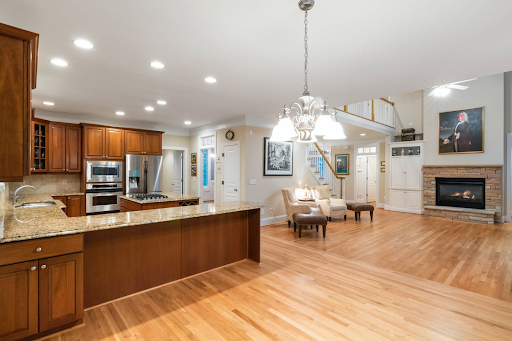You don’t have to settle for concrete if you need flooring for both your indoor and outdoor spaces. Go with natural stone instead, as it is a great option that looks great for a very long time. But you do need to know the pros and cons of Natural Stone Flooring.
Table of Contents
Advantages
There are plenty of good reasons why natural stone tiles remain a favorite flooring option in many households.
- Anti-Allergen. Stone is naturally non-porous, which means that dust and allergens cannot penetrate the surface to hide and collect. This also makes it simple and easy to clean, even with just a broom to sweep away the dust.
- Durable. As you may have already guessed, stone is one of the longest-lasting materials for your floor. It will last for decades at the very least. With proper care, stone flooring can last for generations. It’s a great option for large families, or for homes that play host to parties regularly.
- Naturally Cool. Stones can keep nice and cool indoors, which is great for homes in warmer climates. During the summer, you’ll thank the stone flooring from keeping the heat more bearable.
- Energy-Efficient. Natural stone flooring also works nicely in colder climates or winter seasons. That’s because it is a natural heat conductor, and the stone flooring works nicely with radiant heat. The stone flooring makes for a more energy-efficient heat system.
- Great for Both Indoors and Outdoors. This offers a flooring option that works for a more seamless flow, when you want the same type of flooring for the inside and outside of the home. You can connect both spaces to give off the impression of greater space.
- Elegant Looks. Some natural stone flooring options just ooze class and elegance. It’s one sure way to impress your guests. But it also makes you feel great to see the natural stone flooring all the time.
Drawbacks
However, natural stone flooring isn’t perfect, and you will have to deal with some issues.
- Costly. Even the most affordable natural stone tiles are generally more expensive than most laminate flooring options. Marble flooring prices range from $10 to $20 per square foot. Limestone can cost anywhere from $13 to $30 per sq. foot. Travertine is about $15, while quartz can go from $40 to $75 per sq. foot.
- Professional Installation. This will also add to the total costs, as the installation may be beyond the skills of average DIY enthusiasts. Even if you think you have the right tools and the best tile cutter for stone, the risk of doing it wrong is just too much.
- Water Damage. Natural stone stains a bit too easily, and it can also chip and scratch when it’s exposed to water. There are some ways to minimize this problem, but it’s still an issue.
- Slippery When Wet. You also don’t want to get the natural stone wet, because the floor surface can become slippery. That’s a huge problem, because slipping and falling on a stone floor leads to more serious accidents. There’s just not a lot of cushioning, unlike with laminate flooring or carpeting.
- Tricky Maintenance. You have to be careful with vacuum cleaners, and make sure that you don’t have anything there (including the wheels) that will scratch the stone surface. You can’t use acidic or abrasive cleaners. And you will need to make sure that you blot the spills immediately to prevent stains.
Design Options
You do have lots of design options with natural stone, although the number doesn’t compare with what’s available if you opted for vinyl or even laminate flooring. Still, these designs look great in their own way, and you have several basic options.
- Polished Finish
This gives you glossy and reflective finish, making the stone colors and patterns look more saturated. It’s always a cool look, but this type of finish also shows off smudges and dust more easily. This type of wear can be particularly slippery (especially when wet), and the finish tends to wear more quickly.
- Honed Finish
This gives you a satin-smooth surface, and it also looks more natural. The patterns and colors aren’t as shiny, and instead gives a rather earthy look. The honed finish offers more traction when the floor is wet, making it a safer choice all around. You need this finish if you’re determined to use natural stone flooring for your kitchen, or even your bathroom.
- Tumbled Finish
It’s very similar to the honed finish, but this time you get more of the natural texture of the stone. The floor surface will have a more chiseled look, and it won’t be completely smooth and flat. While the texture offers more traction, the surface may also lead to falls if people aren’t careful.
- Flamed Finish
This uses a hot torch flame so you get a non-slip finish along with a somewhat rough surface. This is often used for outdoor spaces, or in any room where you really don’t
want a slippery floor (like the kitchen and bathroom).
- Brushed Finish
Some natural stone tiles have been brushed with wire brushes and wheels, giving you a more casually worn look along with a smooth finish. This gives off an “older” vibe, in contrast to a more contemporary feel.
Final Words
In the end, if you want a durable floor that oozes elegance, it’s hard to beat natural stone!
